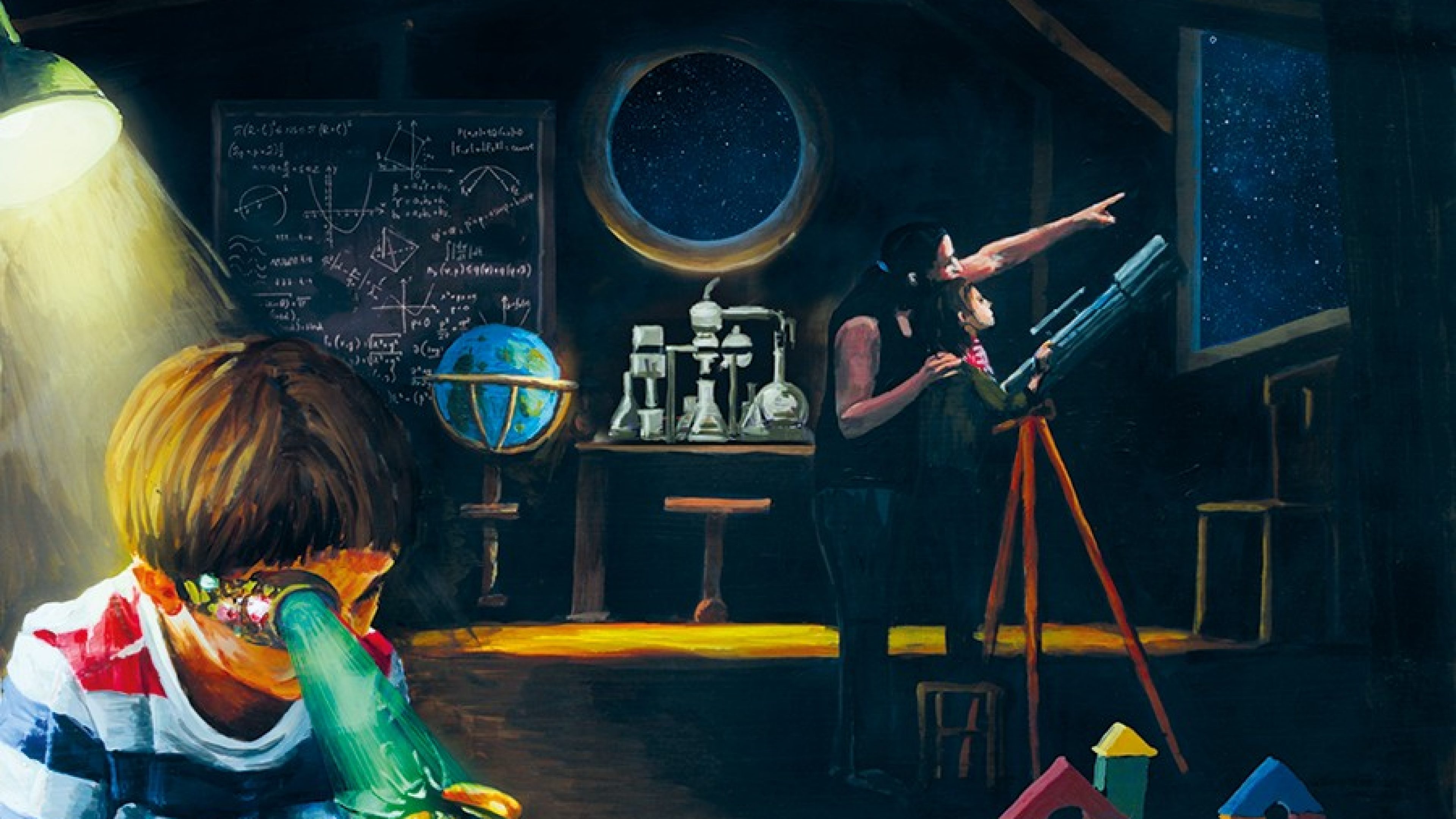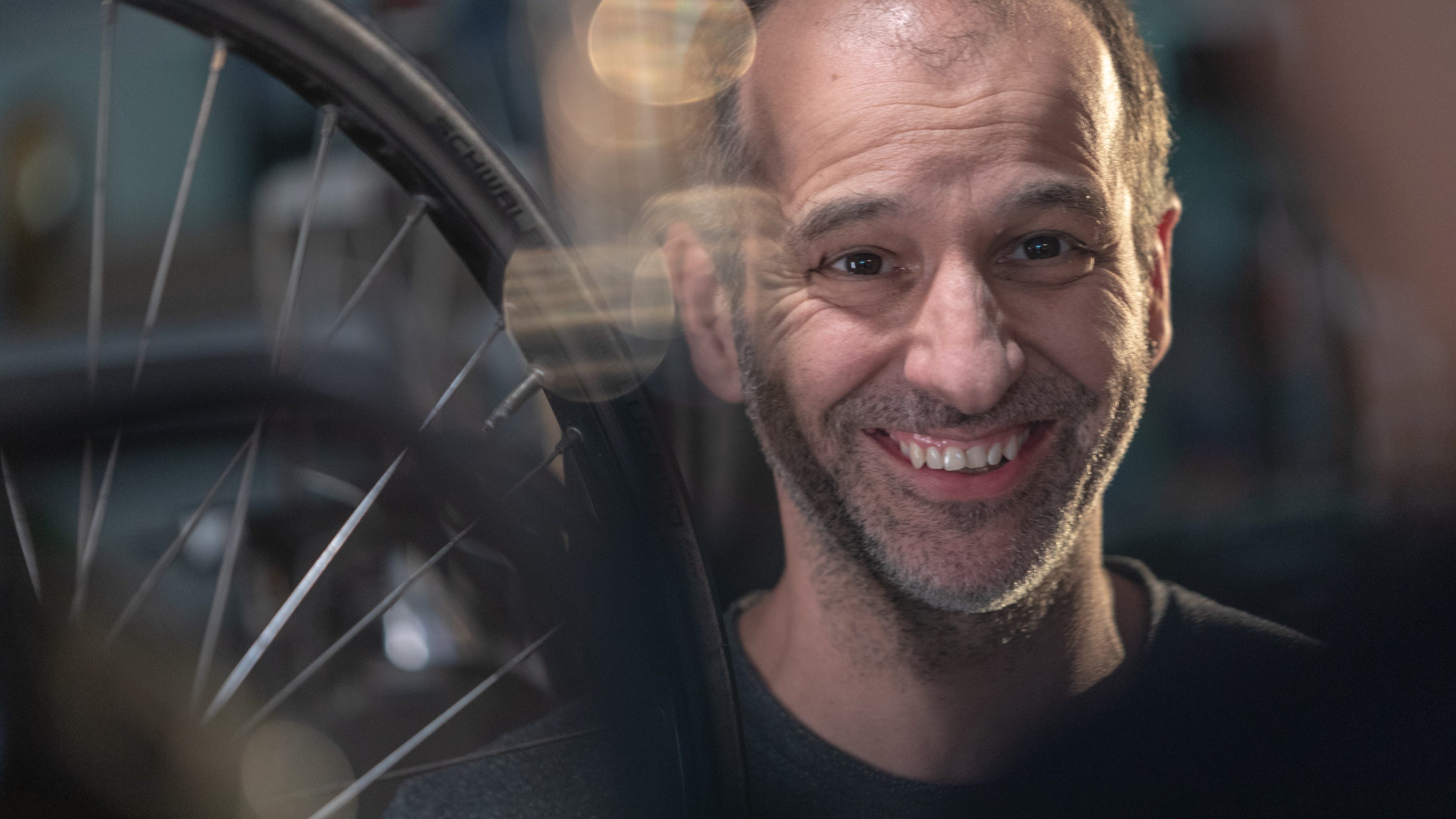Direct access to an audience of millions makes possible a whole new form of self-determination and career. We present six young people who have turned their online presence into a job.

About YouTube
Founded 2005
The American video platform was founded in 2005 and sold just two years later to Google for USD 1.65 billion. Today, youtube.com is the second most-visited site in the world (right behind Google) and has well more than a billion users, most of them in the US (17%), India (8%), Japan, China and Russia (4% each). According to YouTube itself, the platform reaches more people in advertisers’ important target age groups (18-34 and 18-49) “than any cable network in the US”. Although it doesn’t publish financial figures, the platform probably contributed a significant share of Google’s USD 19.4 billion consolidated profit last year.
Joyce Ilg (33) was an unemployed actor in Cologne in 2013 when she discovered YouTube. Today she is considered one of German’s top stars on the video platform (see portrait). The comedian uploads one clip a week, gets hundreds of thousands of views – and reaches a larger audience than many conventional TV stations. “It’s totally cool to have complete control”, says Ilg. “It’s like being screenwriter, producer, director and actor all in one.” Along with other social media platforms such as Instagram and Snapchat, YouTube offers young people a new type of self-determined career.
“One euro for every 1000 clicks”
The initial investments required are modest, and a smart-phone camera is sufficient for a first attempt. No wonder, then, that it’s proving so attractive – just google “how to become a YouTuber” and you’ll get millions of hits. YouTube itself maintains nine studios around the world to help young creatives produce their clips under professional conditions.
But is there any money to be made from it? YouTube isn’t saying anything about monetising clips. German social media expert Philipp Steuer, however, has written an article for young entrepreneurs in which he explains the “YouTuber” business model: “You earn around one euro for every 1000 clicks” and “the exact amount fluctuates greatly from season to season. Most advertising goes online just before Christmas”. But YouTubers don’t only earn by means of clicks: many get companies to sponsor them directly and perform more or less subtle product and service placement in their videos.
Among the most popular genres on YouTube are comedy, haul videos (where someone goes shopping and talks about their purchases on camera), gaming, unboxing (where products are unpacked “live”), tutorials and vlogs (a kind of digital diary).
These six young people, from Germany, England, France, Austria and Switzerland, have made YouTube their personal business model:
Joyce Ilg (33), Germany: Comedy
Channel: Joyce
1,2 million subscribers | 167 million views
In 2014 she was among the first women in Germany to launch a comedy channel and today she is among her country’s most successful YouTubers. Her channel features what she calls “nonsense”, comic shorts imagining what it would be like if couples didn’t lie to each other, or ten reasons why festivals are so awesome: “What I want to tell the girls who watch my videos is simply that you don’t always have to be pretty. You’re allowed to goof around sometimes.” The 33-year-old actor first used YouTube as a stopgap when her film and TV work dried up. But she was such a hit that she is now able to support herself on what she makes with her videos. Or as Ilg says: “It’s totally amazing that I can live off YouTube.”
Gavin Free (29), UK, Dan Gruchy (29), UK: Film
Channel: The Slow Mo Guys
9,5 million subscribers | 1199 million views
The two 29-year-old Brits produce YouTube clips in a quality virtually unheard of on conventional TV stations: with a 150 000-dollar camera they slow down super-speedy moments like an airbag exploding in a microwave or a football hitting someone in the face. Video specialist Gavin Free and explosions expert Dan Gruchy have been in the YouTube biz for seven years and have won many prizes, as well as almost 10 million followers. Their breakthrough came when they blew up a two-meter water balloon (see clip). “Until that point we had about 20 000 views per video”, says Gruchy, “and then suddenly it was two million. At that point we saw what kind of potential we had.” The clip was produced six years ago – and has had over 160 million hits since. The Slow Mo Guys are said to make well over a million dollars a year with their clips alone.
Cyrus North, 27, France: Philosophy
Channel: «Le Coup de Phil’»
0,3 million subscribers | 12 million views
Kant’s categorical imperative, Nietzsche’s Superman, Spinoza’s determinism, Hegel’s dialectic: 27-year-old Cyrus North of France has been teaching young people philosophy since 2013. He decodes the classics and conveys their messages wittily and inventively by weaving them with contemporary pop-cultural phenomena. North, who has a degree in economics, calls himself a “braintertainment creator” and aims to reach those “who don’t usually care about philosophy”. He is so successful at it that his clips are now shown in schools to get children interested in philosophy. But working up philosophical material the Cyrus North way takes time and money: “For Hegel and Nietzsche I needed more than a month”, he says. To finance his channel, North runs a crowdfunding campaign.
Kim Lianne, 26, Austria: Fashion, beauty, food and travel
Channel: itsKimLianne
0,7 million subscribers | 87 million views
Although she is still young, the Viennese native could be called a social media veteran. She started her YouTube channel in 2010, when she was 19. A student of journalism and communications, she is also a routine user of Instagram, Snapchat, Facebook and Twitter. And when it comes to turning her activities into profit, Lianne doesn’t stop at YouTube either: She runs an online jewellery store, has a cooperation deal with Amazon, where products reviewed can be ordered directly, and has produced a TV ad. In her videos, Austria’s “YouTuber of the Year” takes up fashion, beauty, food and travel, all with a twinkle in her eye. How did she get started in her career? “I surreptitiously made a video with my boyfriend’s camera and uploaded the product. I thought to myself, if I get a ‘like’ I’ll continue. The next day I had a star, and even one subscriber on YouTube.”
Julia Graf, (age: none of your business!), Switzerland, Fashion tutorials
Channel: MissChievous
0,8 million subscribers | 180 million views
Julia Graf, a Swiss-Canadian double citizen, has been running a successful beauty channel since 2008. Her videos run the gamut from make-up tutorials to fitness tips. Thanks to her accent-free English, Bernese-born Graf has achieved international fame, with most of her fans from Germany, Brazil and Canada. She makes one or two videos a week. She needs on average two days for a video production – including photos for her blog, picture editing, footage editing, sound, upload and publicity in social networks like Facebook and Twitter. Her videos are authentic: “It’s obvious when people are faking it. It makes you less credible.” Graf has a degree in political science and has now given up her office job to earn her upkeep with advertising and brand collaboration. “I make a good living, but I wouldn’t call myself wealthy”, she says. “I can’t imagine going back to the office.”
Benoît Moreillon, 24, Switzerland: Gaming
Channel: Diablox9
1,7 million subscribers | 246 million views
He’s one of Switzerland’s most successful YouTubers: Benoît Moreillon from the canton of Valais reviews computer games, mostly in what’s known as the “egoshooter” genre. He live-tests the games, offering ratings and comments as he plays. He also visits stars like football’s Zlatan Ibrahimovic or Karim Benzema, talks gaming and plays with them. Benoît dropped out of school in 2012 and today, thanks in part to ads, is able to make a living from YouTube. He even gets people stopping him on the street and asking for his autograph, especially in France. “There are even people who recognise me from my voice.”



